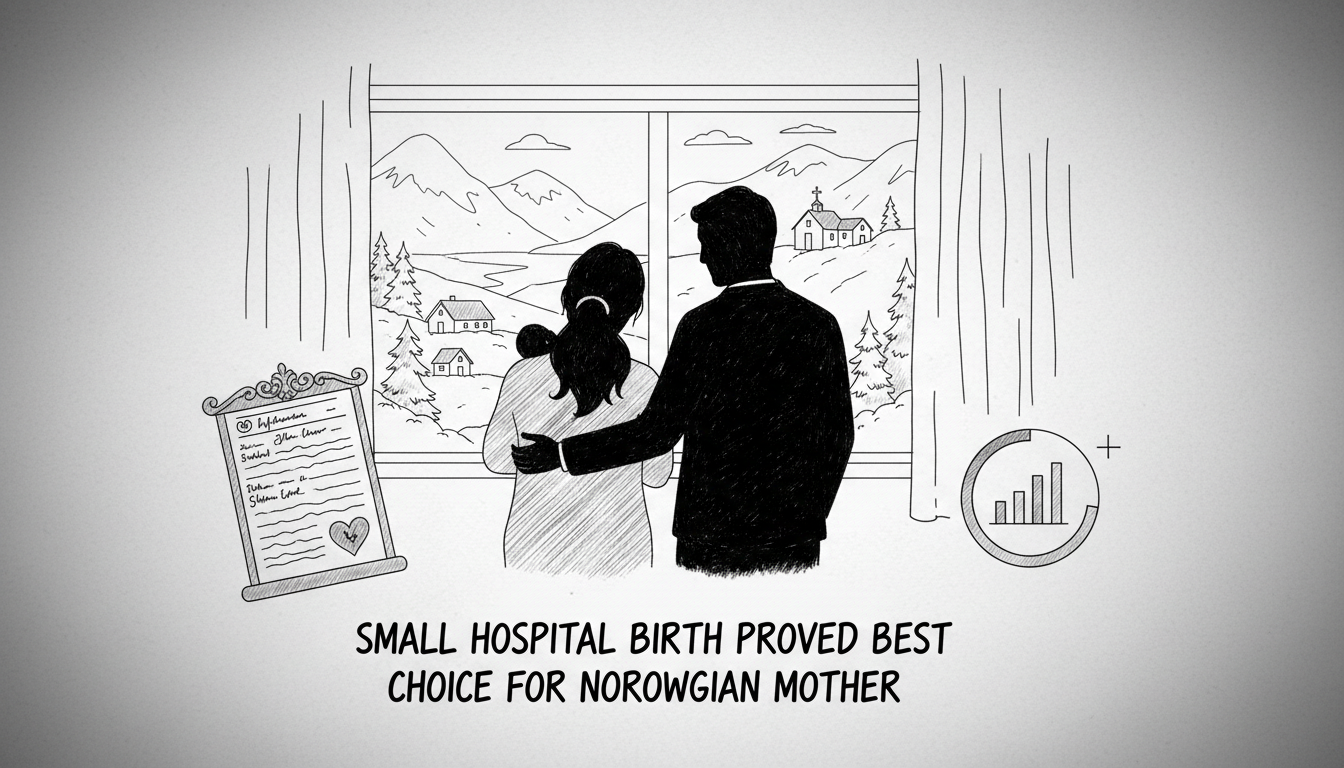Small Hospital Birth Proved Best Choice for Norwegian Mother
A Norwegian mother's positive experience delivering at a small hospital highlights the value of personalized maternity care. The facility scored above average in patient satisfaction surveys, particularly for partner inclusion and communication. This case illustrates ongoing debates about preserving smaller birthing centers amid funding pressures.

Irja Linderud Skabo, 34, chose to deliver her first child at a small hospital in February 2024. She gave birth at Akershus University Hospital's Kongsvinger department. This facility has only two delivery rooms and handles one to two births daily.
"Calm and safety are the words I would use to describe the experience," Skabo said. "I wish all birthing women could experience this."
Small hospitals and birthing centers consistently score high in patient satisfaction surveys. The Norwegian Directorate of Health recently presented data showing these facilities outperform larger institutions in birth and maternity care.
Kongsvinger Hospital handles approximately 550 births annually. It scores above average in all parameters measured for delivery and maternity departments. The hospital falls under the Helse Sør-Øst health enterprise.
More than 130 women responded about their experiences at the small hospital. They gave particularly high scores regarding how their partners were welcomed and included.
Skabo and her partner Håvard Kummen experienced this firsthand. They received their own room upon arrival and stayed for six days.
"They told us 'stay as long as you want,'" Skabo recalled. "What an arrangement! I can't even imagine not having my partner present throughout the entire stay."
She described feeling devastated for women whose birth partners must go home during the process. Having continuous partner support provided enormous security during her vulnerable time.
Skabo's labor was induced using a balloon catheter, a medical device inserted into the cervix to stimulate contractions. She also received CTG monitoring to track the baby's heart rate.
Twenty minutes into induction, five staff members entered her room. They explained the balloon needed removal because the baby's pulse dropped to dangerous levels.
"Two midwives worked quickly while a third focused entirely on explaining what was happening," Skabo said. "They told me if the pulse didn't improve after balloon removal, I would need a C-section."
Staff maintained a positive tone throughout, suggesting she would meet her daughter within thirty minutes if surgery became necessary. This helped Skabo maintain optimism despite preferring natural birth.
After removing the balloon, a midwife stayed to talk with the couple. They monitored the CTG together as the baby's pulse fortunately improved, canceling the C-section.
Hours passed without labor starting naturally. Skabo grew tired and went to bed with her partner.
Her water broke the next day, beginning active labor. When contractions intensified, she requested pain relief but faced a brief wait for nitrous oxide because three women were delivering simultaneously.
"That became the only challenge delivering at a small hospital with just two delivery rooms," Skabo noted.
Despite this, she felt constantly monitored and heard. When powerful contractions overwhelmed her, she received an epidural at 7 centimeters dilation.
"Many get refused at that point, but they saw I needed a break," she said. "I nearly fell asleep while they monitored the baby."
The remainder of her delivery proceeded smoothly with minimal medical intervention. Staff used microdoses of medication to restart labor without causing overly rapid progression.
Skabo felt included in all decisions and received thorough information about procedures. She described a comfortable atmosphere focused entirely on collaboration between midwives, herself, and her partner.
"No question was considered stupid," she emphasized. "They took time for us even during hectic situations with other birthing women."
After delivery, a midwife spent 45 minutes debriefing with the couple about the birth experience.
Skabo had chosen Kongsvinger over the larger Ahus facility closer to her Råholt home based on others' experiences. She heard stories of women denied partner presence or sent home with induction balloons at larger hospitals.
"I got the impression they felt very alone and that births seemed hectic there," she observed. "Sometimes there isn't enough space or time for birthing women."
While acknowledging larger hospitals offer good facilities and neonatal intensive care, Skabo advocates preserving smaller birthing centers. These facilities face constant closure threats due to funding issues.
"We need to consider broader societal economics," she argued. "Negative birth experiences can also cost society money if women need sick leave, therapy, or other support postpartum."
Smaller Norwegian birthing facilities demonstrate that personalized care and medical excellence aren't mutually exclusive. Their continued operation depends on recognizing both their human and economic value.